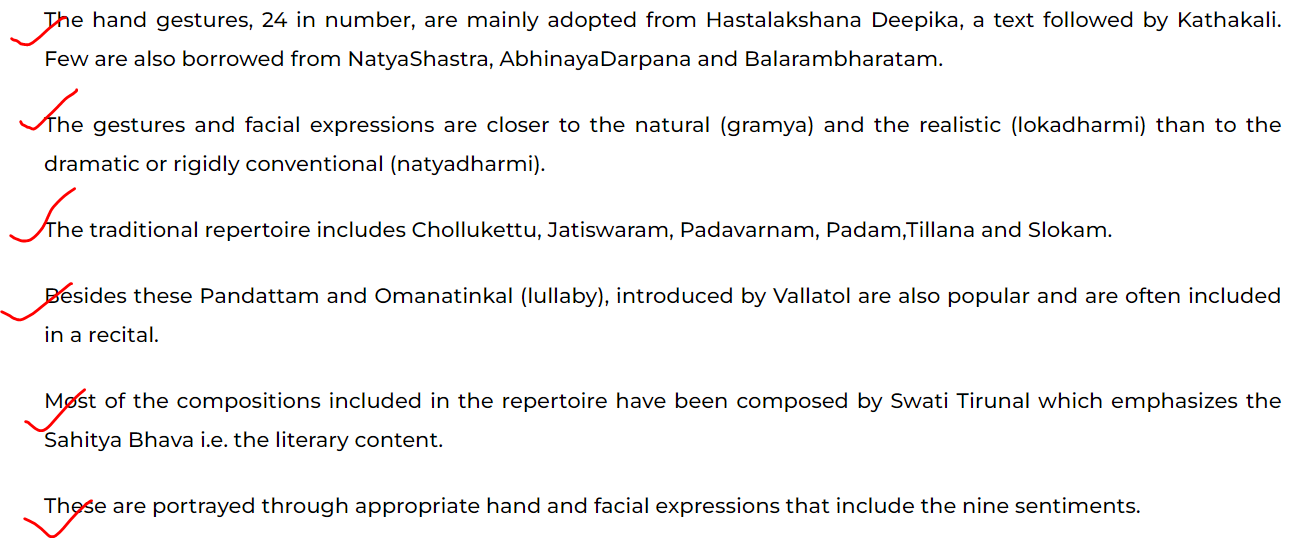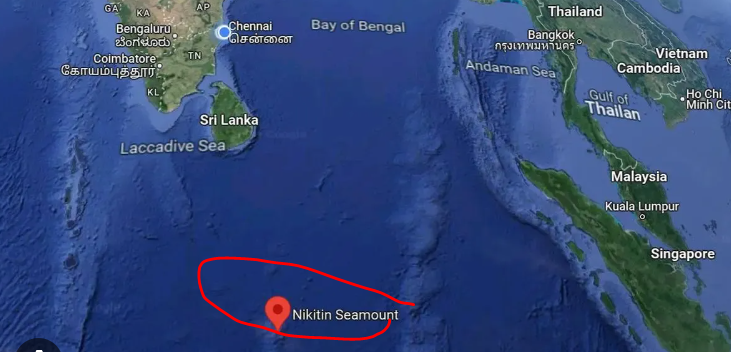Goaltide Daily Current Affairs 2024
Current Affair 1:
Kerala Government lifted gender restrictions to learn Mohiniyattam
News:

In a historic move, the Kerala Kalamandalam, a deemed university for arts and culture, has lifted gender restrictions to learn Mohiniyattam.
About dance:
Mohiniyattam literally interpreted as the dance of ‘Mohini’, the celestial enchantress of the Hindu mythology, is the classical solo dance form of Kerala.
According to a Puranic story, Lord Vishnu took on the guise of a ‘Mohini’ to seduce the Asuras, both in connection with churning of the ocean and episode of the slaying of Bhasmasura.


Current Affair 2:
Carlsberg Ridge & Afanasy-Nikitin Seamount in Indian Ocean
News:
Carlsberg Ridge & Afanasy-Nikitin Seamount in Indian Ocean are of India’s interest for which it has submitted applications for exploration to International Seabed Authority.
Carlsberg Ridge:
It is the northern part of the Central Indian Ridge, a tectonic plate boundary between the African and Indian plates, running along the ocean between India and Africa.
It was formed nearly 30 million years ago, and has been seismically active with major earthquakes.
Running along Seychelles and spanning 3,00,000 sq kms, the Carlsberg Ridge is rich in polymetallic nodules— meaning, it contains mineral deposits with commercially viable quantities of at least 3 metals. The ridge is thought to contain trace elements of copper, lead, and zinc.

The Afanasy-Nikitin Seamount (ANS) seabed
The ANS is a major structural feature in the Indian Ocean, rising up above the sea bed but below the surface, and forming a seamount.

It is 400 km long and 150 km wide, and is located in the Central Indian Basin — southeast to Sri Lanka, right below the equator, to the west of Singapore — and it was formed about 80 million years ago, while dinosaurs still roamed the Earth.
The ANS seamount is about 3,000 km from India’s coast, and is rich in cobalt, copper, manganese, and nickel.
Current Affair 3:
Quantum cryptography
News:

About Quantum cryptography:
- It is also known as quantum encryption which uses the naturally occurring properties of quantum mechanics to secure and transmit data in a way that cannot be hacked.
- It is completely secure against being compromised without the knowledge of the message sender or the receiver.
- It is impossible to copy or view data encoded in a quantum state without alerting the sender or receiver. It uses individual particles of light, or photons, to transmit data over fiber optic wire.
Process:
- Quantum cryptography is not replacing traditional cryptography; rather, it allows for a more secure transfer of the keys used in encoding and decoding.
- The amount of information which can be transferred using quantum cryptography is not very large or very fast, but it is very secure.
- The maximum speed, scale and security of the transfer is achieved by sending the secret key using quantum coding, but encoding and sending the data itself using traditional methods and algorithms.
Benefits of quantum cryptography
- Provides secure communication: Instead of difficult-to-crack numbers, quantum cryptography is based on the laws of physics, which is a more sophisticated and secure method of encryption.
- Detects eavesdropping: If a third-party attempts to read the encoded data, then the quantum state changes, modifying the expected outcome for the users.
- Offers multiple methods for security: There are numerous quantum cryptography protocols used. Some, like QKD, for example, can combine with classical encryption methods to increase security.
Current Affair 4:
Stage-2 of Vikram 1 space launch vehicle

Skyroot Aerospace, the leading space-tech company, has successfully test-fired the Stage-2 of Vikram-1 space launch vehicle, called Kalam-250, at the propulsion testbed of the Indian Space Research Organisation (ISRO), at its Satish Dhawan Space Centre (SDSC) in Sriharikota, Andhra Pradesh.
Space launch vehicles consist of multiple stages: main stage followed by subsequent ones. Stage-2 is a critical stage in the ascent of the launch vehicle, as it propels it from atmospheric phase to the deep vacuum of outer-space.
Vikram-1 launch is a landmark event for the Indian space sector as it is the first private orbital rocket launch, and it follows the suborbital space launch of India’s first private rocket- the Vikram-S by Skyroot in November 2022.
Key facts about the Vikram-1 Rocket:
It is named after the father of India’s space programme, Vikram Sarabhai and is a multi-stage launch vehicle with a capacity to place around 300 kg of payloads in low-earth orbit.
- It has been built by Hyderabad-based Skyroot Aerospace. It is an all-carbon-fibre-bodied rocket that can place multiple satellites into orbit.
- Being a solid-fuel rocket and using relatively simpler technologies would mean that launching this vehicle would require minimal infrastructure and that the rocket could be assembled and launched within 24 hours from any site.



